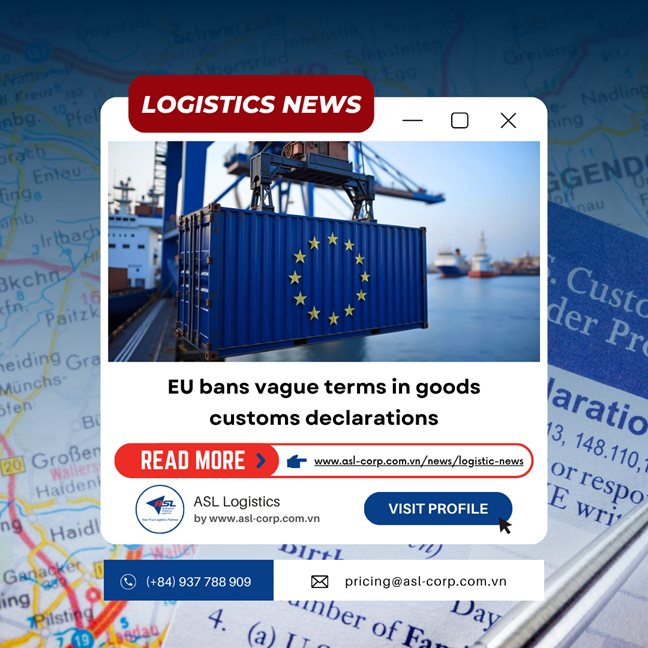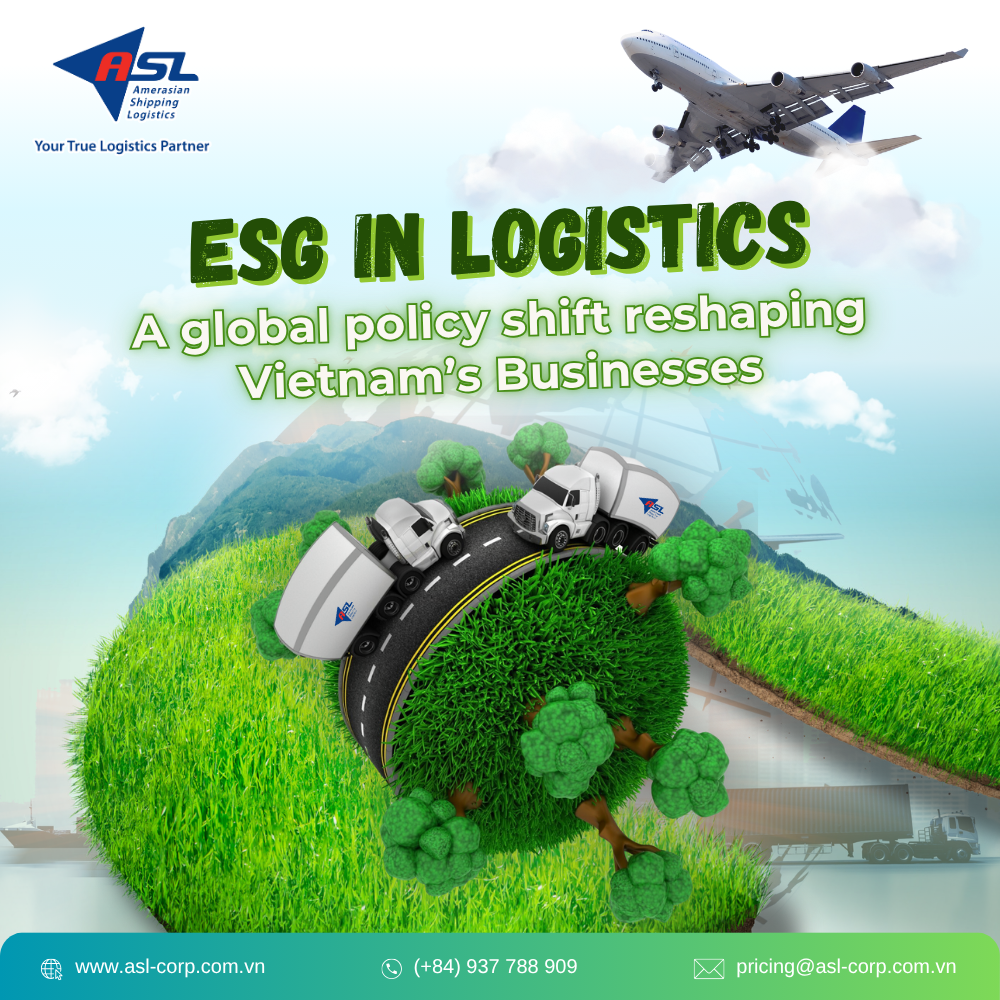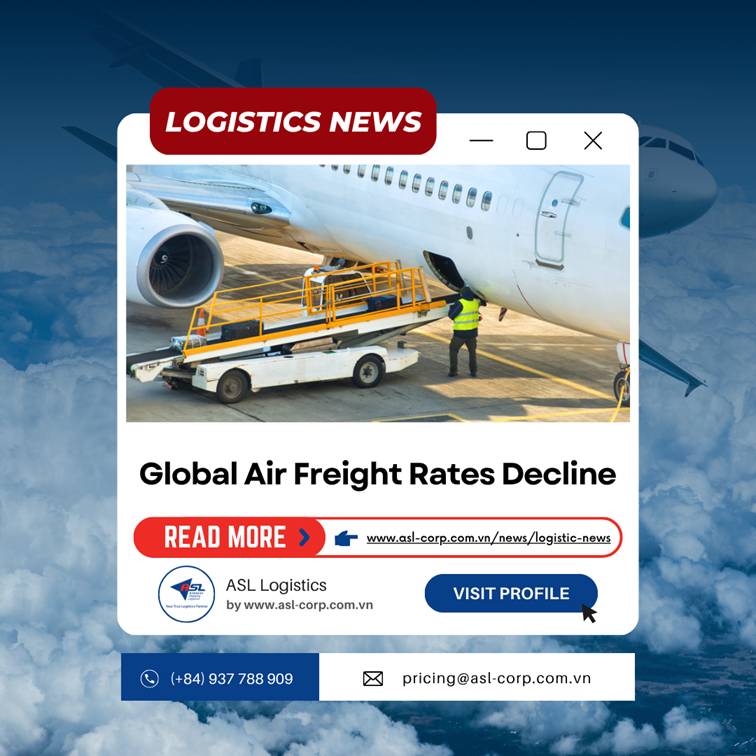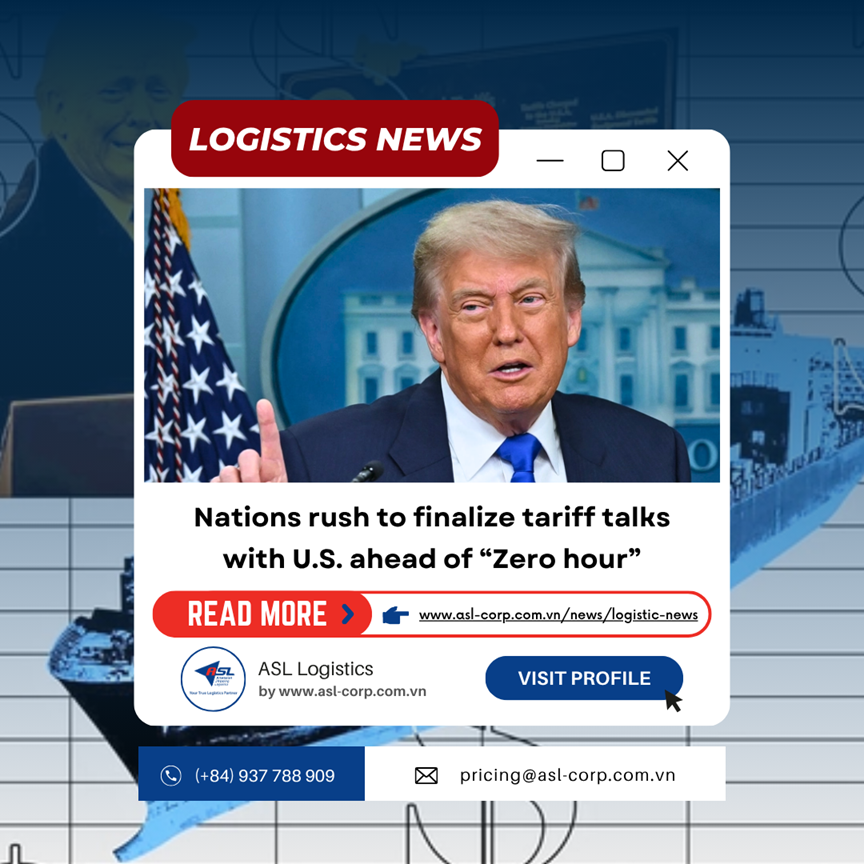Logistic News
THE MEANING OF TEU, FEU, AND DWT IN CONTAINER SHIPPING
23 May 2025
In the 1950s, the freight transport industry faced many challenges due to the use of sacks and wooden crates, which made loading and unloading time-consuming and costly. Malcolm McLean, a trucking entrepreneur, introduced a revolutionary idea: using large, standardized boxes-later known as containers-to hold cargo. This allowed goods to be transferred between trucks and ships without unloading individual packages.
Initially, McLean designed containers that were 35 feet long. However, competitors developed 24-foot containers, which created difficulties for the U.S. government in terms of regulation and standardization. In 1986, the International Organization for Standardization (ISO) established 20-foot and 40-foot containers as the global standards. From then on, the 20-foot container was adopted as the universal reference unit, known as the TEU-Twenty-foot Equivalent Unit.
So, what exactly are TEU, FEU, and DWT, and how do they differ? Let’s figure out with ASL in the article below!"

1. TEU – The Standard Unit for 20-Foot Containers
TEU, short for Twenty-foot Equivalent Unit, is an international standard unit of measurement equivalent to one 20-foot container. It serves as a fundamental metric widely used in the maritime shipping industry to calculate the capacity of vessels, storage yards, handling equipment, and even the volume of cargo processed through ports. A standard 20-foot container typically measures 20 feet in length, 8 feet in width, and 8 feet in height, with a maximum payload of approximately 24 metric tons. Including the tare weight of an empty container (about 2.28 tons), a single TEU represents a total weight of around 26.28 tons.
More than just a unit for measuring cargo on ships, the TEU is also a highly effective statistical tool. Thanks to this standardized unit, major ports such as Shanghai, Shenzhen (China), and Long Beach, Los Angeles (USA) are able to manage and report annual throughput volumes in the tens of millions of TEUs-offering a much clearer picture than using tons alone, which do not accurately reflect the actual number of containers handled.
Below is the ship classification based on capacity measured in TEU:

2. FEU – The Standard Unit for 40-Foot Containers
Alongside the TEU, the FEU (Forty-foot Equivalent Unit) is also used to represent a 40-foot container. By convention, 1 FEU equals 2 TEUs, as the 40-foot container is twice the length of the 20-foot container while maintaining the same standard width and height. FEU is commonly used by shipping lines and logistics companies for transport planning, freight rate calculations, and equipment classification.
Using the FEU unit simplifies calculations for large shipments that primarily use 40-foot containers-this type being more widely used in the global market due to its higher cargo capacity and greater cost-efficiency compared to measuring everything in individual TEUs.

3. DWT – Deadweight Tonnage of a Vessel
In contrast to TEU or FEU-which measure container quantity-DWT (Deadweight Tonnage) is a unit that measures a ship’s total carrying capacity. It refers to the maximum weight of cargo, fuel, freshwater, provisions, crew, and passengers that a vessel can safely carry. DWT is measured in metric tons, with each DWT ton being approximately 16 kilograms heavier than a standard metric ton.
DWT is primarily used to classify the size and load-bearing capacity of ships, especially bulk carriers and oil tankers. However, for container ships, both TEU and DWT are often used together to provide a comprehensive picture of a vessel’s capacity in terms of both volume and weight.

The combination of TEU and DWT is essential in the operation of container ships. In practice, the limiting factor-whether the number of containers (TEU) or the total cargo weight (DWT)-determines when loading must stop. For example, if the ship is carrying light goods such as clothing or footwear, it may be loaded to its full TEU capacity without reaching its DWT limit. Conversely, when transporting heavy cargo like machinery or equipment, the ship can quickly reach its maximum DWT even if the total number of containers falls short of its full TEU capacity.
For example: The Eimskip vessel from Iceland has a capacity of 1,118 TEU or 13,719 DWT. If transporting light goods, the ship can carry all 1,118 TEUs without reaching its weight limit. However, when carrying heavy cargo, only about 650 TEUs are needed to hit the 13,719 DWT limit, requiring loading to stop in order to ensure safe operation.
By understanding key measurement units such as TEU, FEU, and DWT, customers can optimize transport planning, reduce costs, and improve supply chain efficiency. This knowledge also forms a solid foundation for selecting the right logistics partner-especially as global import and export demands rise and market competition intensifies.
ASL Logistics is proud to be a trusted partner in the field of ocean freight, with over 20 years of industry experience and a team of dedicated professionals. Understanding market trends and customer needs, ASL Logistics offers comprehensive Ocean freight services with flexible container types and routing options, along with outstanding advantages such as:
- Thanks to a vast network of agents in over 190 countries and strategic partnerships with reputable shipping lines like ONE Line, Hyundai, OOCL, MSC, YML, EMC, and COSCO, businesses can expand their shipping operations to a wide range of global destinations.
- ASL provides all standard container types, including 20-foot (TEU) and 40-foot (FEU) containers, suitable for Full Container Load (FCL) shipments and Less than Container Load (LCL) shipments for smaller consignments.
- We offer various delivery methods such as CFS-CFS (cargo received and delivered at the port’s warehouse), DOOR-CFS (pickup from the shipper’s warehouse), and DOOR-DOOR delivery (direct to the recipient’s location).
- Our team also provides professional Customs broker consultation, helping businesses complete customs clearance procedures quickly and accurately.
With flexible container and weight management, ASL is committed to being your reliable partner, ensuring your cargo is transported safely, efficiently, and cost-effectively on every international journey.
If you are looking for sea freight services - whether for LCL (Less than Container Load) or FCL (Full Container Load) - feel free to contact ASL Logistics today!
Get in touch with ASL Logistics now for a free consultation on our Ocean freight services!
For consultation or a service quote, please feel free to contact us:
|
Office Locations |
Phone Numbers |
|
|
ASL Ho Chi Minh |
+84-28 3512 9759 |
pricing@asl-corp.com.vn |
|
ASL Hai Phong |
+84-225 3260 906 |
aslhp@asl-corp.com.vn |
|
ASL Dong Nai |
+84-251 883 6018 |
asldn@asl-corp.com.vn |
|
ASL Binh Duong |
+84-274 366 2707 |
aslbd@asl-corp.com.vn |
Related services: Sea Freight, Air Freight, Consolidation Service, Customs Broker Service, Domestics Trucking, 4PL Logistics Supply Chain Management, Project Cargoes Handling, Multi-modal Transportation, Warehousing Services, Shipping and Logistics Services to The U.S, ISO Tank Service, E-Commerce Services for B2B and B2C, Trucking Cross Border to Cambodia, Laos.

Head Office
ASL Hồ Chí Minh
Số 31/34A Ung Văn Khiêm, Phường Thạnh Mỹ Tây, TP. Hồ Chí Minh, Việt Nam
 Công Ty Cổ Phần Giao Nhận Vận Tải Mỹ Á
Công Ty Cổ Phần Giao Nhận Vận Tải Mỹ Á
 (+84)28 3512 9759
(+84)28 3512 9759
 (+84)28 3512 9758
(+84)28 3512 9758
 pricing@asl-corp.com.vn
pricing@asl-corp.com.vn
 mdirector@asl-corp.com.vn
mdirector@asl-corp.com.vn
 www.asl-corp.com.vn
www.asl-corp.com.vn
LOGISTICS SERVICES












.png)
.png)

.png)




